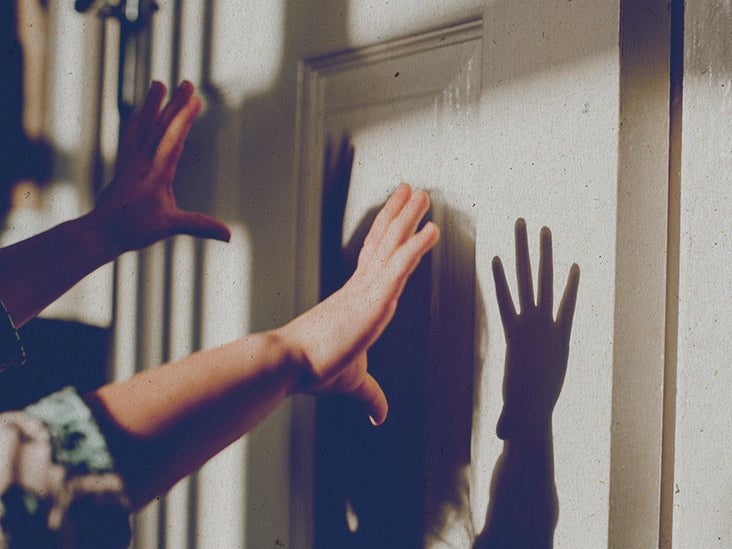Pinworm in kids: Symptoms, causes, and treatment - Medical News Today

Pinworms involve infection by a parasitic worm that may live in the large intestine of a human. A child may contract the infection after unknowingly transferring the worms into their body from a contaminated object or through their fingers.
In the United States, school-aged children and preschoolers have the
A pinworm is a small, thin, white roundworm called Enterobius vermicularis that sometimes lives in the human colon and rectum, also known as the large intestine.
Small children are more likely to contract the infection because they tend not to follow common hygiene practices. Children are often in close contact with each other, making transmission more likely.
The article below offers more information on pinworm in kids, including symptoms, treatment, and prevention.
Pinworms travel from the intestinal tract, laying their eggs on the skin near the anus.
Pinworm infections spread via the
Since young children often put things in their mouths, such as toys and even their fingers, the infection easily spreads in daycare centers and schools.
In some cases, children or other household members unknowingly transfer worms from bedding, clothes, and other objects. This spreads the worms throughout the home and can pass the infection to other family members.
A few hours after a person deposits the eggs on their skin, the infection and symptoms may start. Pinworms may survive about 2–3 weeks on clothing, bedding, or other objects.
Symptoms can vary from mild to severe. After a person swallows the pinworms, the female worm travels out of the intestine to the anal area and lays the eggs. Symptoms usually start after this.
The symptoms of a pinworm infection may include the following:
Although anyone can develop a pinworm infection, it is more likely in children.
Certain risk factors may also increase a person's risk of developing the infection, such as:
- attending a child care center
- sharing a household with a person who has the infection
- not practicing frequent handwashing
- living in crowded settings, such as institutions and dormitories
- frequent thumb sucking
A doctor diagnoses pinworms based on identifying the worms and the presence of symptoms, such as itching in the anal area.
The worms might be visible to the naked eye, on underclothing or sheets, but the eggs are too small to see without a microscope.
A tape test helps identity the eggs. Parents or caregivers should perform the test on the child first thing in the morning before the child uses the toilet or washes. Washing or using the toilet may remove the eggs. To perform the test, use a piece of cellophane tape and place it firmly on the skin around the anus with the adhesive side down. The eggs will stick to the tape. A microscope can then identify a pinworm infection.
People should do the test on
Treatment helps get rid of the worms and ease symptoms. A combination of the treatments below works best to prevent the infection from coming back.
Treatment for pinworms in children includes the following:
Medications
Treatment involves two doses of over-the-counter or prescription medications spaced
Common medications used to treat pinworms include:
- albendazole (Albenza)
- mebendazole (Vermox)
- pyrantel pamoate (Reese's Pinworm Medicine)
Since the infection spreads easily among people living together, treatment should also include all caregivers of the child and people living in the household.
Hygiene tips
In addition to medication, practicing proper hygiene helps prevent reinfection. Caregivers can use the following hygiene tips:
- washing hands frequently
- keeping fingernails short
- working with the child to avoid thumb sucking and biting the nails
- changing underwear daily
- washing clothes and bedding in hot water
Although some people may turn to home remedies to get rid of pinworms, little research supports their effectiveness. Individuals who suspect a child has a pinworm infection should seek help from a healthcare professional before trying home remedies.
Learn more about treatment options for pinworms here.
Typically, pinworm infections are bothersome but do not become serious. However, complications may develop in some instances. Possible complications include:
- Skin infections: A secondary skin infection may develop from scratching.
- Urinary tract infections: Females with a serious pinworm infection can develop an infection in their urinary tract. The worms may travel to the bladder leading to an infection.
- Vaginitis: The worms may also travel from the anal area to the vagina, causing an infection.
- Weight loss: In cases of a severe infection, the worms may leech off of the child's vital nutrients, leading to weight loss.
It is helpful to contact a doctor if any of the above complications develop or if infections reoccur.
Parents and caregivers can take several steps to prevent pinworm infections in children, such as:
- teaching children good handwashing
- washing bed linen and underclothes often
- thoroughly washing toilet seats
- wiping toys
- encouraging the child to shower daily
- teaching children to avoid putting their fingers in their mouth
- keeping fingernails short
- making sure children wash their hands before eating
- thoroughly wiping the anal area with every diaper change
- avoiding scratching skin in the anal area
Pinworms in children involve infection with a small, white worm that lives in the intestines. The worms travel through the intestines and lay eggs outside the skin around the anus.
Symptoms include intense itching. Treatment often helps and includes a combination of medications and good hygiene to prevent reinfection.
Comments
Post a Comment